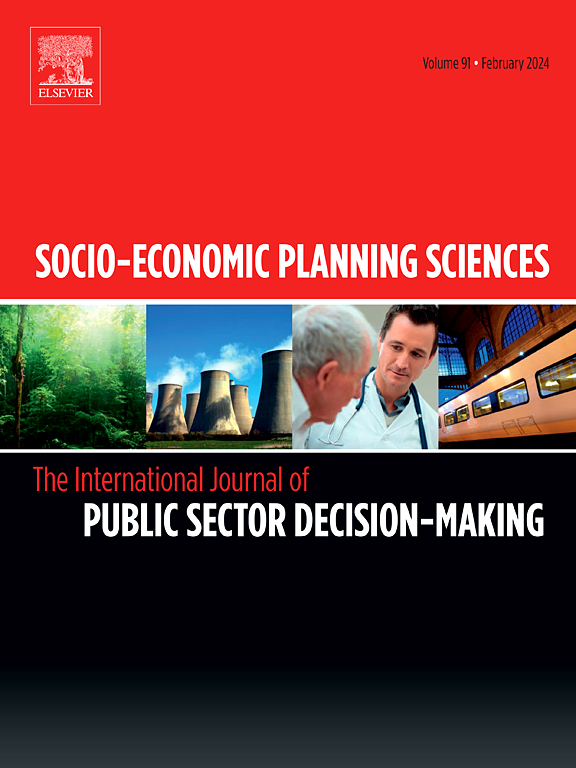Modeling socio-spatial resilience of public engagement with urban spaces
IF 5.4
2区 经济学
Q1 ECONOMICS
引用次数: 0
Abstract
As urbanization continues to advance, Public Open Spaces (POS) have become an essential part of daily life. In the face of increasingly frequent crises such as natural disasters, pandemics, and socioeconomic upheavals, these spaces play a crucial role in maintaining the basic functions of cities and enhancing the well-being of urban residents. However, the current research on how the public perception of POS affects urban resilience rarely involves the analysis of the resistance and recovery capabilities of public in the face of disasters. Using geotagged social media big data, this paper focuses on investigating the visitation frequency, sentiment analysis, and Cultural Ecosystem Services (CES) in Western China accross the COVID-19 pandemic era and its recovery. Based on the analysis, we calculated sentiment scores and created a CES dictionary to characterize public perception. We thenemployed a PLS-SEM model to analyze the social, economic, and environmental factors influencing public sentiment toward POS. The results show that public crises lead to significant declines and fluctuations in visitation frequency and sentiment, and also alter public CES behavioral patterns. Moreover, the sentiment recovery capacity enhances the sentiment resistance capacity. High-quality urban ecological and cultural environments, healthcare infrastructure, and active social media discussions contribute to public resilience, while higher urbanization rates and population densities have the opposite effect. Additionally, during the pandemic, public interest in recreational CES was stronger than in other periods. Such public-based research provides a more comprehensive understanding of urban resilience, and offers opportunities to improve resilience policies and enhance public well-being.
建立公众参与城市空间的社会空间弹性模型
随着城市化进程的不断推进,公共开放空间(POS)已成为人们日常生活中不可或缺的一部分。面对日益频繁的自然灾害、流行病和社会经济动荡等危机,这些空间在维护城市基本功能和提高城市居民福祉方面发挥着至关重要的作用。然而,目前关于公众对POS的认知如何影响城市韧性的研究很少涉及公众面对灾害的抵抗和恢复能力的分析。利用地理标记社交媒体大数据,对新冠肺炎疫情及其恢复期间中国西部地区的访问频率、情感分析和文化生态系统服务(CES)进行了研究。在此基础上,我们计算了情绪得分,并创建了一个CES词典来描述公众的看法。运用PLS-SEM模型分析了社会、经济和环境因素对公共服务满意度的影响。结果表明,公共危机导致公共服务的访问频率和情绪显著下降和波动,并改变了公共服务的行为模式。此外,情绪恢复能力增强了情绪抵抗能力。高质量的城市生态和文化环境、卫生保健基础设施和活跃的社交媒体讨论有助于提高公众的复原力,而较高的城市化率和人口密度则会产生相反的效果。此外,在大流行期间,公众对娱乐性消费电子产品的兴趣比其他时期更强烈。这种基于公众的研究提供了对城市韧性更全面的理解,并为改善韧性政策和提高公众福祉提供了机会。
本文章由计算机程序翻译,如有差异,请以英文原文为准。
求助全文
约1分钟内获得全文
求助全文
来源期刊

Socio-economic Planning Sciences
OPERATIONS RESEARCH & MANAGEMENT SCIENCE-
CiteScore
9.40
自引率
13.10%
发文量
294
审稿时长
58 days
期刊介绍:
Studies directed toward the more effective utilization of existing resources, e.g. mathematical programming models of health care delivery systems with relevance to more effective program design; systems analysis of fire outbreaks and its relevance to the location of fire stations; statistical analysis of the efficiency of a developing country economy or industry.
Studies relating to the interaction of various segments of society and technology, e.g. the effects of government health policies on the utilization and design of hospital facilities; the relationship between housing density and the demands on public transportation or other service facilities: patterns and implications of urban development and air or water pollution.
Studies devoted to the anticipations of and response to future needs for social, health and other human services, e.g. the relationship between industrial growth and the development of educational resources in affected areas; investigation of future demands for material and child health resources in a developing country; design of effective recycling in an urban setting.
 求助内容:
求助内容: 应助结果提醒方式:
应助结果提醒方式:


